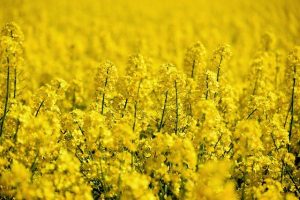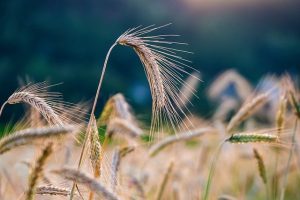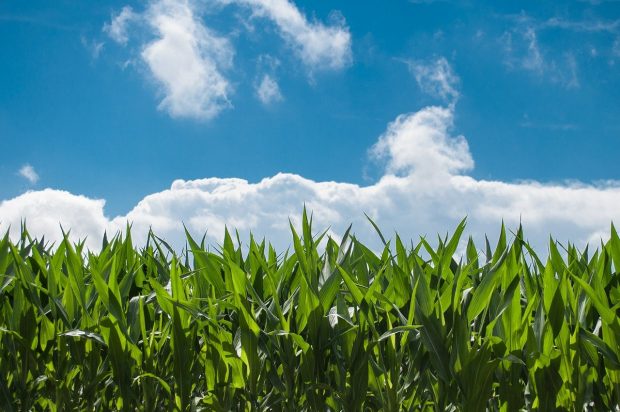The shift from crop rotation to monoculture is one of the main causes of soil erosion. A corn-wheat-grass rotation has an erosion rate of 6.7 Tn/ha/year compared to 50 Tn/ha/year for a continuous corn crop. Because of these erosion rates, the loss of soil fertility is evident, increasing the dependence on inputs to cover this decline in fertility. Normally, these inputs are not composted organic matter but chemical fertilizers that can also destructure the soil, in addition to other collateral effects.
Crop rotation is the repeated establishment of an orderly succession of crop species on the same plot. It is the opposite of monoculture, or growing the same crop on the same plot over time.
If rotation is the orderly succession of crops that are repeated over a number of years, the alternative is the simultaneous cultivation of the species involved in the rotation. In this case, the farm is divided into different plots, each of which is devoted to a different crop each year, until the rotation is complete. These plots are called “alternative leaves” or “amelgas”.
What are crop rotations

The development of the practice of rotation is due to the fact that crops grown in this way had a higher yield than if the same species was grown continuously for a certain period of time on the same plot (monoculture). The increase in yield compensated for the reduction in frequency of occurrence or area of a crop and the result is an increase in crop efficiency. This is called the ROTATION EFFECT. This effect is based on a number of agronomic reasons, among them the control of pests and diseases through rotation.
Monoculture favors the multiplication of specific pests and diseases, because each crop favors the presence of certain organisms (fungi, bacteria, etc.) in the soil. When a crop is repeated in large numbers (monoculture), the populations of these organisms increase, and some of them become harmful to the crop. Therefore, crop rotation is effective in controlling the proliferation of pests and diseases that meet the following requirements :
- They come from a source located on the farm or nearby. Examples are nematodes living in the soil, fungi, insect pests, etc. In contrast, rotation is not effective for highly mobile pests, which can invade more distant areas.
- These are pests and pathogens that have a narrow host range, so that the absence of hosts for several years results in the death or loss of viability of the disease or pest inoculum to produce an infection. However, even in the case of polyphagous pests or pathogens with a wide host range, the inclusion of less desirable crops in the rotation can exert some control over the problem. For example, polyphagous pests such as wireworm are influenced by the previous crop. Sweet potato or potato caused an increase in the wireworm population in the soil, while other crops, such as turnip, tobacco, tomato, or white fallow, decreased it.
- They are unable to survive for long periods without a living host. One example is cereal foot rot, caused by the fungus Ophiobolus graminis Sacc, which is the main obstacle to the recovery of wheat. Potato diseases such as potato pox and potato scab, caused by the fungi Rhizoctonia solani Kuhn and Actinomyces scabies Güss, make it advisable to establish a rotation in which the crop is not repeated for four or five years, because the disease remains latent in the soil, and when the potato crop is repeated, its virulence increases. Plant pathogenic nematodes, such as Meloidogine sp. or Heterodera sp. also significantly reduce their population in the soil when a rotation of two or more years is established, involving non-host crops.
Principles of crop rotations

This can be designed taking into account the family to which it belongs – as crops of the same family cannot be repeated -, the depth of the roots or the usable part of the plant. Sometimes there is even an incompatibility between the different families. For example, Solanaceae and Cucurbits should not be grown one after the other. Sometimes it is necessary to eliminate for a few years certain crops that present serious health problems, especially during the conversion period.
But soil conditions must also be considered, and it is therefore necessary to know the physical, chemical and biological characteristics of our soils (history, chemical analysis, etc.). This will help determine the quality of the soil and whether it is necessary to prepare it beforehand by any treatment. It can also guide or determine the types of crops to be put in the rotation and the alternatives.
When organizing the rotation and for its success, it should be taken into account that the soil should always be covered, normally by means of cultivated or natural plant cover (spontaneous flora), since they prevent the loss of nutrients, stimulate the biological processes of the soil, provide organic matter, protect the soil from erosion, increase the efficiency of irrigation by improving the water retention capacity, etc. The inclusion of green manures in the rotation is also a complementary strategy, both in terms of fertilization and pest and disease control.
Therefore, rotation design requires the following guidelines, among others:
– Determine the physical, chemical and biological characteristics of the soil.
– Keep the soil covered.
– Establish primary crops first, followed by secondary crops (short-cycle, undemanding, etc.).
– Grow species from different families, with different root depths and shapes – and combine them with plants with complementary needs.
– Alternate weeded crops with soil-improving crops.
– Once an appropriate rotation has been established, variations should be minimized.
